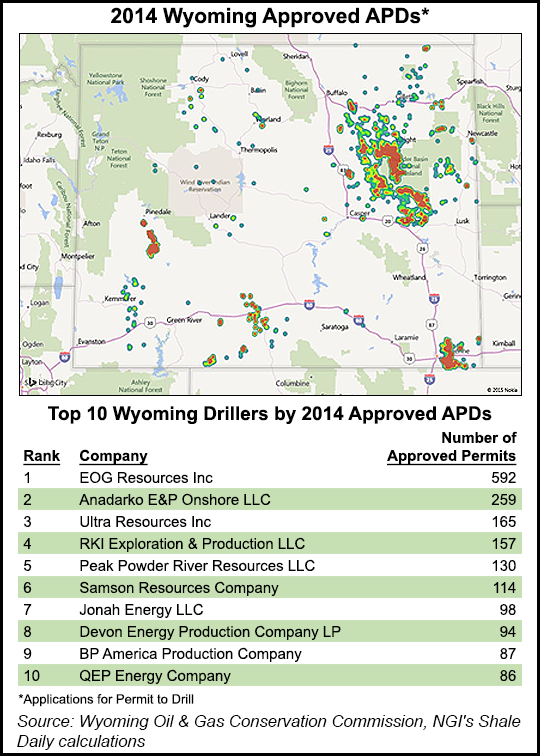E&P | NGI All News Access | NGI The Weekly Gas Market Report
Wyoming Extends Drilling Setback Distances
With industry support, the Wyoming Oil and Gas Conservation Commission (OGCC) on Tuesday extended the minimum setback distance for drilling sites from 350 to 500 feet.

The OGCC said the new setback standard is focused “on resolving conflicts between often competing interests, such as mineral owners, surface estates and nearby homes, along with those private parties best positioned to resolve those conflicts.” It is designed to provide increased protection to occupied structures, such as residences, schools, offices and other places of work, and hospitals.
New communications requirements between operators and the nearby occupants are included, including notification of “the best management practices and site-specific measures an operator will employ.” The requirements should not impose economic restrictions on oil/gas exploration and production activities, OGCC said.
Petroleum Association of Wyoming (PAW) Vice President John Robitaille told NGI‘s Shale Daily that the industry supported the move by the OGCC and did not want a longer distance as some had advocated. One proposal had called for a quarter-mile buffer.
OGCC has been considering the setback rules for more than a year (see Shale Daily, Jan. 28, 2014). OGCC also was being urged by the Powder River Basin Council and other advocacy groups to consider action to curb gas flaring at the wellhead.
PAW provided geology, financial and legal experts to address potential operational and economic impacts from longer setbacks. “We provided these presentations to support the 500-foot limit, and not go any farther than that,” Robitaille said. “We were always supporting the 500 [-foot standard].”
PAW provided experts that showed the oil and gas operators performing directional drilling would be short-changed by a longer setback. “The technology is not available for us to go back under the rig and capture the minerals, so we would be losing a tremendous amount of minerals [at that setback distance],” Robitaille said.
The state commission in its decision also has given OGCC Supervisor Mark Watson the discretion to increase or decrease setback distances. The regulatory body also determined that “there is no definitive science or data” regarding energy development’s effects on human health that might provide a clear guidance for establishing setbacks.
Prior to the ruling, environmental advocates at the Wyoming Outdoor Council had complained that access to the natural resources was being given preference over public health and safety concerns in only extending the minimum setbacks by 150 feet.
© 2024 Natural Gas Intelligence. All rights reserved.
ISSN © 2577-9877 | ISSN © 1532-1266 | ISSN © 2158-8023 |
